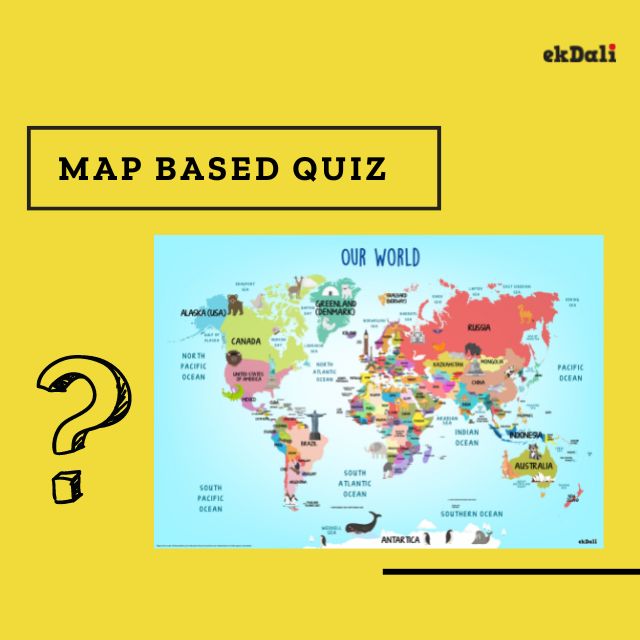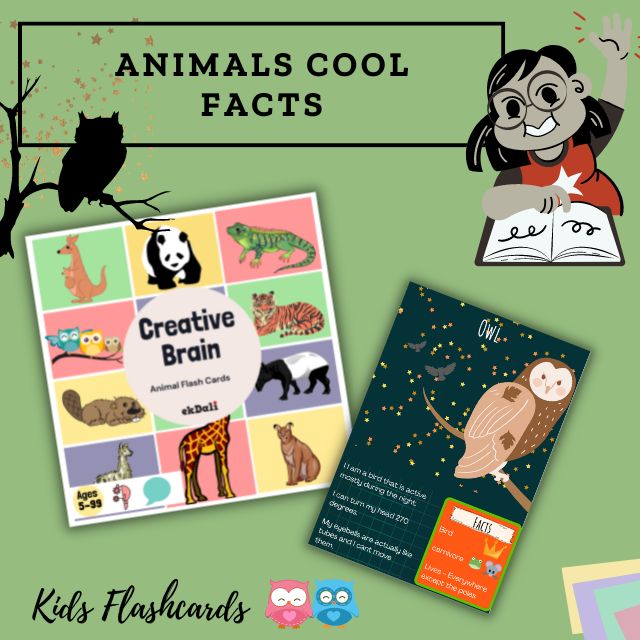The card in the above image is from our Creative Brain Animal Flashcard series.
OWL FACTS FOR KIDS
- The barn owl is the most widely distributed species of owl in the world and one of the most widespread of all species of birds, being found almost everywhere except for the polar region.
- Many owl species have asymmetrical ears, which is located at different heights on the owl’s head, their ears are able to pinpoint the location of sounds in multiple dimensions. Ready, aim, strike.
- The eyes of an owl are not true “eyeballs.” Their tube-shaped eyes are completely immobile, providing binocular vision which fully focuses on their prey. This gives owls a great ability to judge height, weight, and distance of the prey.
- They also have extraordinary night vision and far-sightedness, but there is a drawback. Because they are far-sighted, owls can't see objects up close. To make up for this, they have filo plumes, small hair-like feathers on their beaks and feet to feel their food when hunting.
- Owls have three eyelids. One is for blinking, one is for sleeping, and one is for keeping their eye "tubes" clean.
- Owls can rotate their necks 270 degrees. A blood-pooling system collects blood to power their brains and eyes when neck movement cuts off circulation.
- Owls have air-cushioned vessel casings so they don't rupture any blood vessels when snapping their necks around so dramatically and quickly.
- They have broad wings that allow them to glide, minimizing the flapping that creates most of the noise from a flying bird. For when flapping is necessary, many owl species have special flight feathers that make the action as silent as possible. Below these feathers, the wings of owls are also covered in fine downy feathers that dampen sound even more.
- They can rotate their fourth toe back and forth, which is why when owls are flying, they have three toes in front and one in back. For a truly exceptional grip, owls have the ability to lock their toes around an object so that they don't need to continually contract their muscles.
- Owls are not great at building their own nests, preferring to take over those built by other birds—ones that have been abandoned by crows, hawks, or even squirrels. Some opt to nest in cavities or in the crotch of trees, where they can find shelter, or, as in the case of elf owls, where woodpeckers have already made holes.
- The tiniest owl in the world is the Elf Owl, which is 5 - 6 inches tall and weighs about 1 ½ ounces. The largest owl is Blakiston's fish owl, weighing 6 to 8.8 pounds with a wingspan of 6.5 feet. It can be found in Russia, China, and Hokkaido, Japan, and it eats fish, as its name suggests.
- Owls have no teeth in their beaks to chew prey. Instead, they swallow it whole or in large chunks. Once in the stomach, anything that's not digestible, like bones, fur, and insect exoskeletons is formed into oval-shaped pellets. These are regurgitated while the owl roosts during the day and tend to accumulate beneath an owl's nest.
- Different species lay different numbers of eggs. The baby owls, or owlets, hatch within three to five weeks of the eggs being laid, and will hatch in the order in which they were laid. This is known as "asynchronous hatching."
- Not all owls hoot! Barn Owls make hissing sounds, the Eastern Screech-Owl whinnies like a horse, and Saw-whet Owls sound like, well, an old whetstone sharpening a saw.
- India is home to about 36 species of owls. Andaman Masked-Owl, Jungle Owlet, Barn Owl, Asian Barred Owlet, Andaman Scops-Owl, Boreal Owl, Brown Fish-Owl, Asian Barred Owlet, Australasian Grass-Owl.
|
FOOD |
INSECTS, SMALL MAMMALS |
|
GENDER NAMES |
MASCULINE-OWL, FEMININE-HEN OWL |
|
YOUNG ONES |
OWLET |
|
COLOUR |
BROWN, GREY, TAN |
|
SIZE |
LENGTH:13-70CMS WEIGHT: 1.5-2 KG |
|
LIVES IN |
ALL PLACES EXCEPT POLAR REGION |
HERE IS A FUN QUIZ ABOUT OWLS, THAT YOU CAN ATTEMPT. THIS IS BASED ON WHAT YOU HAVE READ SO FAR
- Where you cannot find owls?
- Name some species of owls found in India
- Which owl makes a hissing sound?
- Which is the tiniest owl in the world?
- What system collects blood to power their brains and eyes when neck movement cuts off circulation?
- Owls have asymmetrical ears. True/False?
- What are filo plumes?
- What does asynchronous hatching mean?
ANSWER TO THE QUIZ
- We cannot find Owl in the polar region.
- Boreal Owl, Brown Fish-Owl, Asian Barred Owlet, Australasian Grass-Owl.
- Barn Owl makes a hissing sound.
- Elf Owl is the tiniest owl in the world.
- Blood-pooling system.
- True. Owls have asymmetrical ears.
- Filo plumes are small hair-like feathers on their beaks and feet to feel out their food when hunting.
- Eggs will hatch in the order in which they were laid that is called asynchronous hatching.
Prodycts in our portfolio related to this post
Creative Brain Animals of the world Flashcards
























